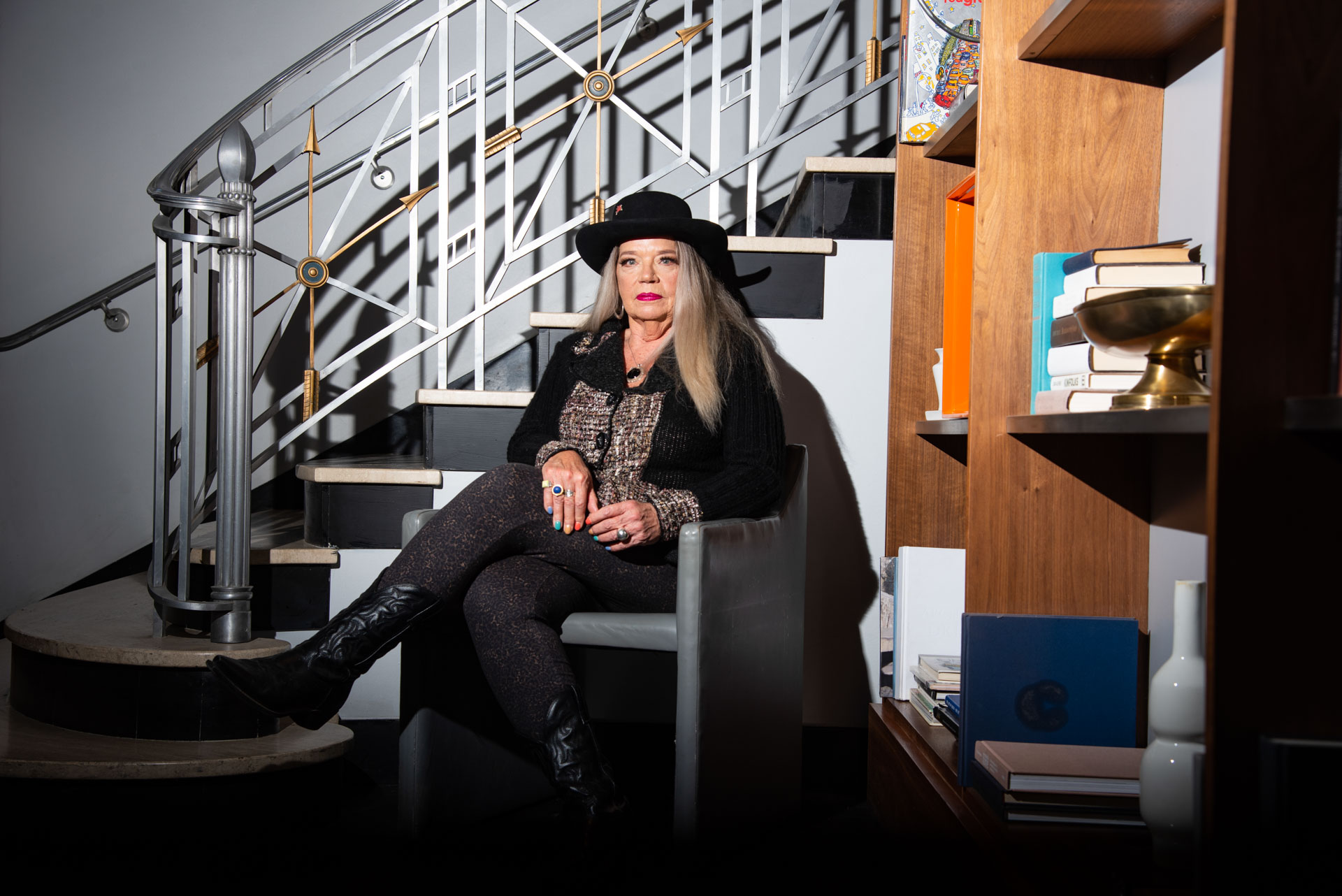
Brenna Elliott at the Stoneleigh Hotel. Photography by Emil Lippe.
Brenna Elliott’s fascination with history began at Dallas cemeteries.
“Somehow, don’t ask me, I don’t know, I got into studying cemeteries — going to cemeteries, filming, taking pictures and making slideshows and putting music to it and then learning about everybody I had just filmed,” Elliott says.
She had already retired when she began diving into local history. As a student at Stephen F. Austin State University, she had taken some flying lessons and decided she wanted to be a commercial pilot. But her parents said no.
Her first real job was back in Dallas, her hometown, working three years for an edible nut broker whom Elliott says was the first person in the city to have an automobile phone. There, she learned about sales and marketing and how to deal with everyone from a businessperson in New York City to a farmer in San Saba.
By then it was the late ’70s, and Elliott relocated to Houston. She was hired at an employee-placement firm, M. David Lowe, where she worked for two years.
“I learned the most outstanding basics of recruiting and headhunting, the most honorable and the way it should be,” Elliott says.
But she really missed Dallas, so she moved back.
With support in the form of a $6,000 loan from her father, she opened her own firm, Lusk & Associates. Her client list included Trammell Crow and Raymond Nasher, who was also the landlord of her office, which was located in NorthPark Center. Later, Elliott opened a temporary division, “which can turn you into a serial killer overnight,” she says, because of the intense pressure to fill spots on short notice with quality candidates that would fit a company’s needs.
She had the same employees during the 25-year run of her company. Then she joined a friend and started a retain-search business called SearchScience. Part of the appeal was that she would be paid a retainer up front; she had been working on commission since she was 28 years old.
For the last seven or eight years of her career, she was doing about four deals annually in the retain-search industry, mostly finding candidates for C-suite positions.
Then she retired, and that’s when she began studying cemeteries across the city. Once, she was chased by three doberman pinschers in a South Dallas graveyard.
Cemeteries got her hooked on history, and she started getting acquainted with neighbors who had a breadth of knowledge on the subject.
Having spent some of her childhood living on Easton Road in East Dallas and teenage years on Princess Lane in Sparkman Estates, Elliott already had a feel for the city.
But she joined the Dallas History Facebook group and met Debby Massie Lacy, the group’s founder who became Elliott’s mentor. After Lacy died, Elliott didn’t immediately create her own history group. But she was at the car wash one day, and “Live and Let Die” started playing on the speaker. Lacy was a huge fan of the Beatles, and hearing that song gave Elliott the confidence she needed to establish her own group.
She founded Dallas History Guild in 2015 with the goal to educate, preserve and discover. It now has 11,000 members. She hopes to one day have a brick-and-mortar museum.
“I formed Dallas History Guild because I wanted to be a voice when I have a petition going for something that’s being destroyed that I can take before the Landmark Commission, or somebody can, and push that forward,” Elliott says.
Until the pandemic started, the guild also hosted events. Once, they visited the Dallas Police Department Museum and then were loaded in paddy wagons to go to the Mounted Unit in Fair Park.
“We’re not a memories group. We’re not a shoutout group,” Elliott says. “It’s like you’re in a classroom but you’ve got a good professor and you’re having lots of fun.”
In 2018, Elliott, who lives in Casa View, was appointed to the Dallas Historical Commission by Judge Clay Jenkins, and she served a two-year term. During that time, she was part of the effort to approve historical markers for Little Egypt and Martyr’s Park.
Over the years, she’s met some of Dallas’ most notable movers and shakers. She interviewed the widow of Henry Beck of The Beck Group, a construction and architectural firm. She attended a family reunion of the Buhrer family, dairy farmers whose land was in East Dallas.
And she interviewed members of the Goforth family. The City of Dallas acquired more than 400 acres of land from them during the construction of White Rock Lake. Elliott has known Teresa Goforth since elementary school and also spoke with her father, David.
“They would drive their jalopies up to Flag Pole Hill and square dance up there,” Elliott says. “And then to make the jalopy go, they’d make it go down the hill so it would gain some speed so it would go back up the hill, all the time playing some kind of square-dancing music on the radio. Because they had to keep the radio going so they had to keep the car going so they could dance.”
And she became friends with Beverly Heart, who had ties to Casa Linda Plaza and Estates. It was developed by her father, Howard Brown, who was following the vision of her grandfather, Carl Martin Brown.
“We’ve got to continue the awareness,” Elliott says. “And it’s not what you remember that, for us, is critical. It’s the history.”





